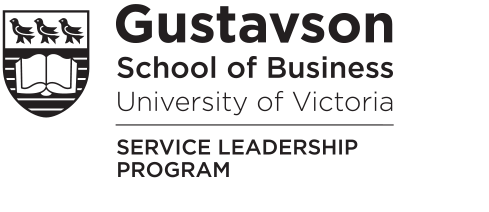Key drivers help strengthen employee engagement through coaching
As noted in a previous post, coaching is the only strategy that companies can deploy that simultaneously increases customer engagement and employee engagement. You can increase customer engagement by raising the abilities and the motivation of employees to serve the customer through coaching; and when I say customer service, I do not differentiate between an internal customer and external customer. At the same time, you increase employee engagement because each time you successfully coach an employee, you engage them in their jobs, their sense of purpose in driving the organization forward toward this vision, and embrace the firm’s strategic choices.
Fortunately, there is some very clear research on what the key drivers of employee engagement are. Once we know these drivers, we need to think carefully about how we tap into each of these drivers of employee engagement in the coaching session we’re about to run.
This research on employee engagement is best summarized by Daniel Pink’s book, Drive. Pink (2011) summarizes his employee engagement research into three main drivers: autonomy, mastery, and purpose.
Autonomy: We’re all built with inner drive. E.L. Deci and his colleague Richard Ryan have explored the nature of what’s called self-determination theory, a theory of motivation that takes into account people’s psychological needs. They revealed, in a study of workers at an investment bank, that managers who offered autonomy support resulted in higher job satisfaction and better job performance. Autonomy support means helping employees make progress by giving meaningful feedback, a choice over how to do things, and encouragement. Workplaces can support autonomy by giving employees control over various aspects of their work—like deciding what to work on or when to do it. Virgin is one of the world leaders in terms of creating autonomy. As Richard Branson says, “We give our people real autonomy… We encourage employees to take advantage of flexible work hours: They can opt for alternative schedules, to work from home, or to work from one of our other offices.”
Coaching creates autonomy by putting accountability on the employee for their growth and by showing them what is possible. Also, by growing their skills, they then can undertake tasks and responsibilities that they could not do before.
Mastery: Mastery is the urge to get better and better at something that matters. We want to get better at doing things. A sense of progress, not just in our work, but also in our capabilities, contributes to our inner drive.
Daniel Pink (2011) states that there are three parts to mastery. First, mastery is a mindset, in that we either believe we can get better or we don’t. Second, mastery is painful, in that it involves not only working harder, but also working longer at the same thing. Finally, mastery is not a straight line, in that you may come close to, but never reach.
Coaching obviously is all about creating mastery. By helping employees grow through coaching, in their respective domains, they are moving toward mastery.
Purpose: People who find purpose in their work unlock the highest level of the motivation game. Pink says that it’s connecting to a cause larger than yourself that drives the deepest motivation. Purpose is what gets you out of bed in the morning and into work a little bit quicker than those who don’t have purpose. That also means that people who have purpose are motivated to pursue the most difficult problems. Elizabeth Moss Kanter, a professor at Harvard Business School, has formulated her own trio of motivating factors. One of the three is the same as purpose, meaning, she calls it. It is what helps people go the extra mile and stay engaged. “People can be inspired to meet stretch goals and tackle impossible challenges,” she writes, “if they care about the outcome.”
Coaching creates purpose by linking coaching to the employee’s aspirations and goals, as well to the organization’s goals. The more alignment between the two, the higher their sense of purpose will be.
Consider the following example as to how to use autonomy, mastery, and purpose in a coaching session, to ensure you have used these three drivers of employee engagement to the fullest.
Example: Coaching for Timeliness
Janet Wong opened her messenger program and pinged her colleague, Juan Gomez. “Running late. In a meeting. Start without me. I’ll jump in as soon as I can,” she wrote.
“Here we go again,” Janet thought to herself. “I start early, and by 10 a.m. I am 20 minutes behind. How come this happens every day?” Janet scribbled a note: Improve timing!!!! Then went back to her call.
Later in the day, Janet went back to her scribbled note on timing. “The problem is back-to-back meetings,” she thought. “No,” she continued, “it is getting off the first call late, then having the second call go over. It’s not just me, it is the calls, too.”
Janet thought for a moment about what she could do. “The trouble is our culture. We do everything by conference call, and if one person is late, we wait for them. Then the call runs late. Things happen on the call, too. Some people want in-depth answers that the rest of us don’t need. There has to be a way to take those discussions off-line and save us some time. Really, this is the conference call chair’s role.”
Janet thought about the chair for her first call that morning. Chen Day was a new employee and had a lot of technical expertise, but not a lot of experience managing colleagues. Being new, he was still feeling his way and figuring out how much he could ask of his team and his supervisor.
Janet thought about how she could use coaching and autonomy, mastery and purpose to improve meeting performance.
The impact of AMP
Through the use of AMP, Chen and Janet were able to set clear, measurable goals and work through them together. Here’s how:
Autonomy: If you are running effective coaching sessions on how to manage great meetings, then you are empowering Chen to properly execute the values of the organization and take control of meetings, even if they are challenging.
Mastery: Running a great meeting requires excellent organizational and people management skills. When you teach people to run great meetings, you’re enhancing their ability to master an important task within the organization.
Purpose: If Chen will be more successful in his role by running the meeting himself, then we need to drive his sense of purpose forward by highlighting how running a great meeting will increase his personal brand and help him achieve the goals he set out through his coaching sessions.



